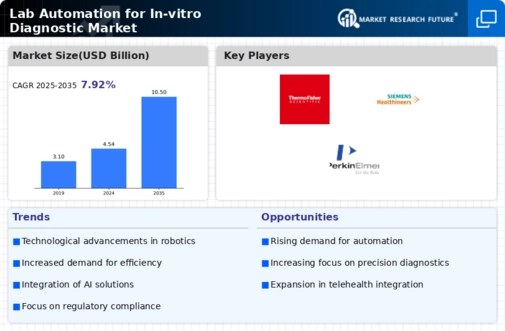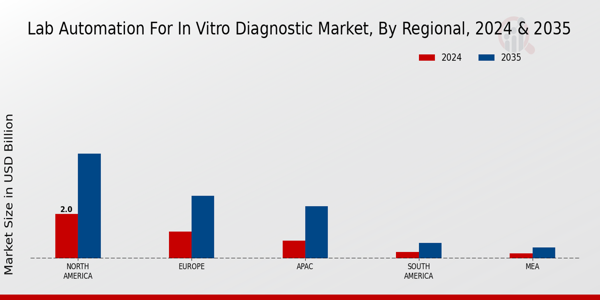The Lab Automation for In-vitro Diagnostic Market has emerged as a critical segment in the healthcare sector, driven by advancements in technology aimed at improving diagnostic processes and outcomes. Competitive insights in this market reveal a landscape marked by rapid innovation, strategic partnerships, and an increasing focus on efficiency and accuracy in laboratory operations.
As laboratories seek to optimize workflows and reduce human error, the integration of automation technologies has become a focal point. Key players in this market are continuously developing and refining their product offerings to cater to a diverse set of customer needs, which includes enhancing throughput, minimizing contamination risks, and supporting personalized medicine initiatives.
The competitive dynamics are characterized by a blend of established companies and emerging startups, each striving to capture market share through unique solutions and strong customer relationships. Abbott Laboratories has established itself as a formidable player in the Lab Automation for In-vitro Diagnostic Market, recognized for its commitment to innovation and quality.
The company leverages a robust portfolio of automated systems and assays that enable laboratories to process a high volume of tests with increased efficiency and accuracy. Abbott Laboratories’ strengths lie in its extensive research and development capabilities, which drive the continuous improvement of automated diagnostic solutions.
Their focus on customer-centric design ensures that their automation technologies align with the operational needs of laboratories, helping to streamline workflows and deliver accurate results swiftly.
Additionally, Abbott Laboratories boasts a strong global presence, allowing it to cater to diverse markets and maintain competitive advantages in rapid-response diagnostic solutions that are critical for effective patient management.
Roche Holding is another key competitor in the Lab Automation for In-vitro Diagnostic Market, with a reputation built on innovation and technology leadership. The company's emphasis on automation revolves around enhancing diagnostic capabilities, improving lab efficiency, and minimizing hands-on time for laboratory personnel.
Roche Holding excels in providing automated solutions that combine high-throughput capabilities with advanced data analytics, thereby facilitating more accurate diagnoses. Their integrated platforms support a wide range of tests, covering areas such as genomics, immunochemistry, and molecular diagnostics, which place them in a strong position within the market.
Roche Holding's strengths also stem from its strategic partnerships and collaborations within the industry, enabling it to expand its technological advancements and respond effectively to the evolving needs of laboratories and healthcare providers worldwide.

















Leave a Comment